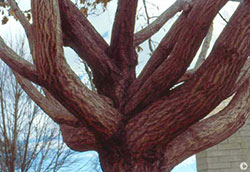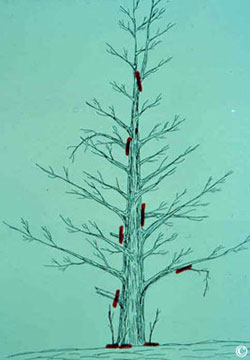 Trees in the Rocky Mountain region must be pruned properly to thrive. Shade trees should be pruned to keep them healthy, to control insects and disease, for safety and to reduce their canopy.
Trees in the Rocky Mountain region must be pruned properly to thrive. Shade trees should be pruned to keep them healthy, to control insects and disease, for safety and to reduce their canopy.
Pruning a tree can be thought of as cleaning; broken, dead or diseased branches should be removed. These branches are like open wounds for the tree and removing them prevents harmful fungi from entering the tree. Removing diseased branches prevents further spread of the disease. Dead branches are breeding sites for bark beetles and other insects. Overlapping branches should also be removed to prevent them from rubbing against each other and forming a wound. Also remove branches that are split, dead, broken or are a safety hazard. Include branches that interfere with pedestrian and vehicular traffic.

Trees should be planted where they have ample space to grow. However, this is not always done and sometimes the tree needs to be contained. Branches above or touching a house may cause damage. Some trees are soft wooded and should be thinned periodically to keep snow from breaking the branches and causing major damage.
For more information, see the following Planttalk Colorado™ video(s).
For more information, see the following Colorado State University Extension fact sheet(s).



